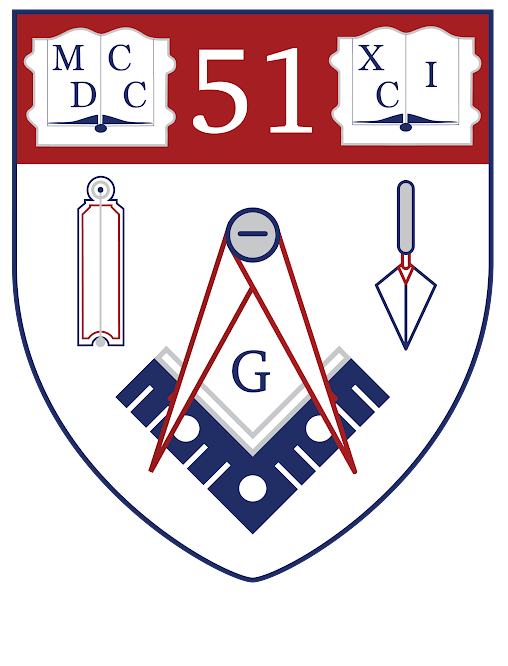A BRIEF HISTORY OF UNIVERSITY LODGE NO. 51
University Lodge No. 51 was created in 1979 by the merger of two lodges–Lodge No. 51 and University Lodge No. 610–in Philadelphia. The merger of these two lodges was a natural choice, at least from an historical perspective. Lodge No. 51 has counted among its members more University of Pennsylvania alumni than any other lodge in the Commonwealth, while University Lodge No. 610 was founded by several students, alumni and faculty of the University of Pennsylvania who had intended to form an “academic lodge.” (The University is important in Pennsylvania Masonic history because six of its founders, including Benjamin Franklin, and well over a dozen of its alumni have been Grand Masters of Pennsylvania.)
Lodge No. 51 was formed in 1791 at the Free Quaker Meeting House located at Fifth & Arch Streets. This was the Meeting House for those members of the Religious Society of Friends (a.k.a. the Quakers) who became known as the “Free Quakers” or “Fighting Quakers” because they chose to take up arms against the British in the American War of Independence. (Quakers are traditionally strict pacifists.) The first Master of the Lodge was Richard Wistar of the prominent Philadelphia German-American family. After the current Masonic Temple was completed in 1873, Lodge No. 51 began to meet in Ionic Hall where it still meets to-day. Many current members of the Lodge are those who became Freemasons in Lodge No. 51 before the merger, as well as some of their sons and grandsons. Also on the Lodge’s rolls are a few members and veterans of the United States Armed Forces.
University Lodge No. 610 was formed in 1895 by students and alumni of the University of Pennsylvania wishing to establish an “academic lodge” affiliated with the University, along the lines of Apollo University Lodge at Oxford and Isaac Newton University Lodge at Cambridge. This was one of the earliest attempts, if not the first, to establish an academic lodge in the United States; however, due to its popularity it was unable to restrict membership to Penn students and alumni. While the Lodge did not become a strictly academic lodge per se, like Lodge No. 51 it still attracted large numbers of University men. The first Master of the Lodge was the University’s then-Vice Provost (later Provost) Edgar Fahs Smith. One Penn alumnus and founding member of University Lodge No. 610 (and also a member of Lodge No. 51), Bro∴ George E. Nitzsche, went on to found at the University the Franklin Chapter of Acacia Fraternity, whose membership was originally restricted to Master Masons. Originally meeting in Oriental Hall at the Philadelphia Masonic Temple, the University Lodge had to move to the much larger Corinthian Hall to accommodate what soon became the largest Blue Lodge in the Commonwealth. The Lodge retained a strong affiliation with “dear old Penn” until after the First World War, during which many University students were killed on the battlefield. Thus, the University Lodge had a smaller pool from which to draw members. To-day the Lodge still attracts “Men of Pennsylvania” and has a few University of Pennsylvania students and alumni on its rolls in addition to students and alumni of other prominent universities such as Princeton, Columbia, Lehigh, Temple, Drexel, and Delaware to name a few.
